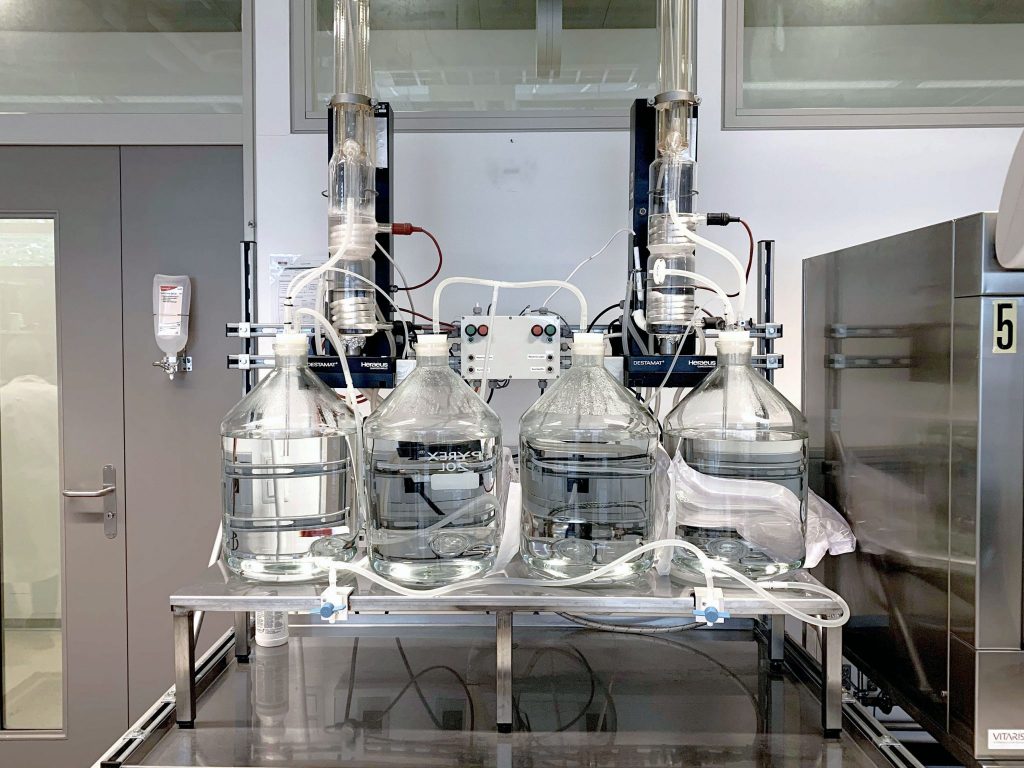
Thanks to specific equipment in place in the Glassware washing facilities, a production of bi-distilled water from the demineralized water network, is available in the AI and SV buildings. This water is bottled in volumes of 2L, 1L and 500mL and autoclaved before being provided to users.
- Users can collect up to 4 L of water without prior order, in the Facilities SV 1522 and AI 0231, during business hours;
- Volumes of 5 Liters and more, a prior order by email is required. The delivery time is approximately one week. Users will be notified by returning email as soon as their order is ready to be picked up in the premises.
NB: The Facility does not prepare volumes of sterile bidistilled water inferior to 500ml.
Different types of water
Different kinds of water, other than the above bidistilled water, are available in the laboratories of the SV School. All these waters have different properties and each of them is more or less suitable for the various experiments.
The table below provides an overview of the characteristics of these different types of water in order to best choose the one that is most suitable for scientific activities:
